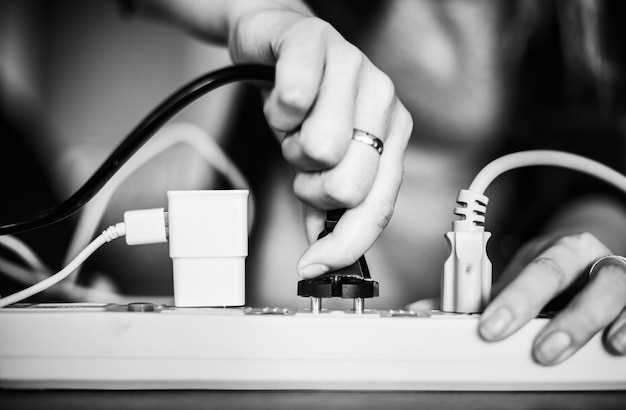How to restore marine electrical wiring safely

Restoring marine electrical wiring is a crucial task that every boat owner needs to consider for maintaining both efficiency and safety on the water. The harsh marine environment can take a toll on wiring systems, leading to potential hazards such as short circuits or electrical fires. Therefore, understanding safe methods for restoring this wiring is essential for ensuring a secure and reliable electrical system onboard.
When approaching the restoration of wiring, it is vital to prioritize safety above all. This means using materials that are resistant to corrosion and ensuring that all connections are adequately insulated. Marine-grade wiring is specifically designed to withstand the challenges of saltwater, humidity, and temperature fluctuations, making it the preferred choice for any electrical repairs. Proper tools and techniques will further enhance the safety of the restoration process.
In addition to materials, maintaining a detailed understanding of the boat’s electrical layout is crucial. This knowledge helps in identifying problem areas and planning appropriate interventions. Taking the time to document the existing wiring configuration ensures not only a more efficient restoration process but also aids in future maintenance efforts. By adhering to these safe methods, boat owners can enhance the longevity and reliability of their marine electrical systems, allowing for many safe voyages ahead.
Assessing the Condition of Existing Boat Wiring

When considering the safety of your vessel, assessing the condition of existing boat wiring is crucial. Over time, exposure to moisture, salt, and mechanical wear can significantly affect wiring integrity. Regular inspections can help identify potential hazards before they become serious issues.
Start by visually inspecting the wiring insulation for cracks, fraying, or discoloration. These symptoms indicate deterioration and can compromise safety. Pay special attention to areas near connections and terminals, as they are more prone to corrosion and damage.
Next, check for proper connections. Loose or corroded connections can lead to electrical failure, increasing the risk of fire or system malfunction. Ensure that all terminals are clean and securely fastened, and consider using dielectric grease to protect against moisture and corrosion.
Using a multimeter, test the voltage at various points in the system. This can help determine if there are any voltage drops, which may indicate issues along the wiring path. Ensure continuity in circuits to confirm that the wiring is intact and functional.
Lastly, be aware of local regulations regarding wiring standards and safety. Many regions require that boat wiring adhere to marine-grade specifications to ensure durability and safety. Familiarizing yourself with these guidelines can help maintain compliance and enhance safety.
In conclusion, a thorough assessment of existing boat wiring includes visual inspections, connection checks, voltage testing, and awareness of regulations. Taking these steps can help ensure the reliability and safety of your marine electrical systems.
Choosing the Right Materials for Marine Electrical Repairs

Selecting the appropriate materials for marine electrical repairs is crucial for ensuring safety and reliability. Marine environments can be harsh, with exposure to moisture, salt, and varying temperatures, making it essential to choose materials specifically designed for these conditions.
When it comes to wiring, opting for tinned copper wires is highly recommended. Tinned copper offers enhanced corrosion resistance, prolonging the lifespan of your electrical systems. Ensure the wire gauge is suitable for the intended load to avoid overheating and potential hazards.
Additionally, using marine-grade connectors and terminals is vital. These components should be made from materials like stainless steel or brass, which resist corrosion and provide a secure connection. Consider connectors that are heat-shrinkable and have adhesive linings, as they create a waterproof seal that further protects the wiring.
Choosing the right insulation type is also essential. Materials such as cross-linked polyethylene (XLPE) or polyvinyl chloride (PVC) are excellent for marine applications due to their durability and resistance to water and UV radiation. Insulated wiring should have a high temperature rating to withstand extreme conditions.
Always prioritize safety when selecting materials. Look for certifications from recognized standards organizations to ensure that the components meet safety requirements for marine use. Following these tips will help maintain the integrity of your electrical system and enhance the overall safety of your vessel.
Implementing Safety Protocols During Wiring Restoration
When restoring marine electrical wiring, ensuring safety is paramount. Here are essential tips to follow during the process.
First, always disconnect the boat’s battery before beginning any work. This prevents electrical shocks and short circuits, protecting both the technician and the vessel’s systems. Use insulated tools specifically designed for marine environments to minimize risks.
Secondly, conduct a thorough inspection of existing wiring. Look for signs of wear, corrosion, or damage. Understanding the overall condition of the wiring helps in planning the restoration and identifying potential hazards.
It is crucial to wear appropriate personal protective equipment (PPE). Use insulated gloves and safety glasses to safeguard against unforeseen accidents during the restoration process. Ensure the workspace is well-lit and ventilated to avoid any mishaps, especially when working with materials that may emit fumes.
Subsequently, use marine-grade materials and components for the restoration. These products are specifically designed to withstand the marine environment’s harsh conditions, thus enhancing safety and durability.
Establish a clear workspace and keep it organized. Avoid clutter to prevent tripping hazards and ensure that all tools and materials are within reach. Implementing a system for labeling wires and connections can also help during reassembly, reducing the chances of mistakes.
Finally, adhere to manufacturer specifications and guidelines when restoring electrical systems. This ensures that all connections are made according to safety standards, significantly reducing the risk of future failures or accidents.
By following these tips, you can implement effective safety protocols during wiring restoration, ensuring a secure and efficient process while maintaining the integrity of your boat’s electrical systems.




